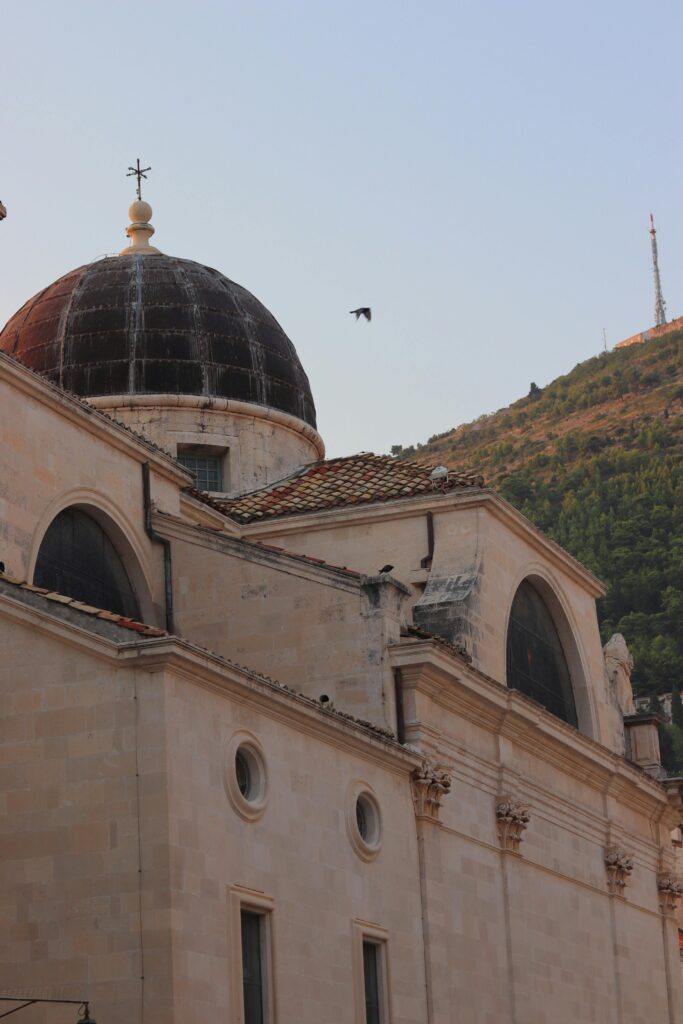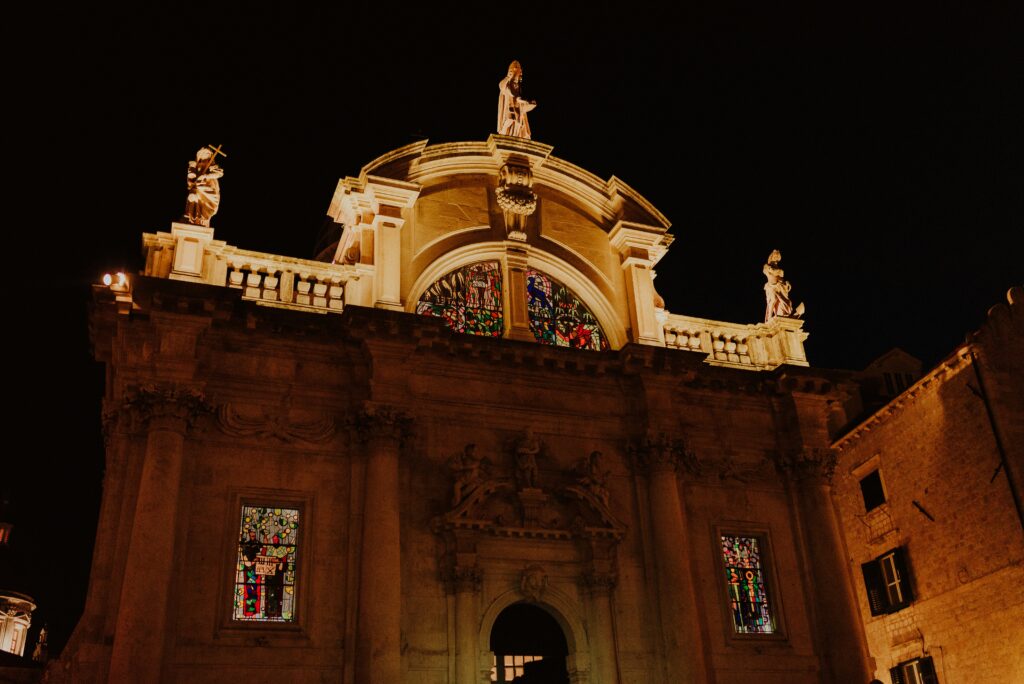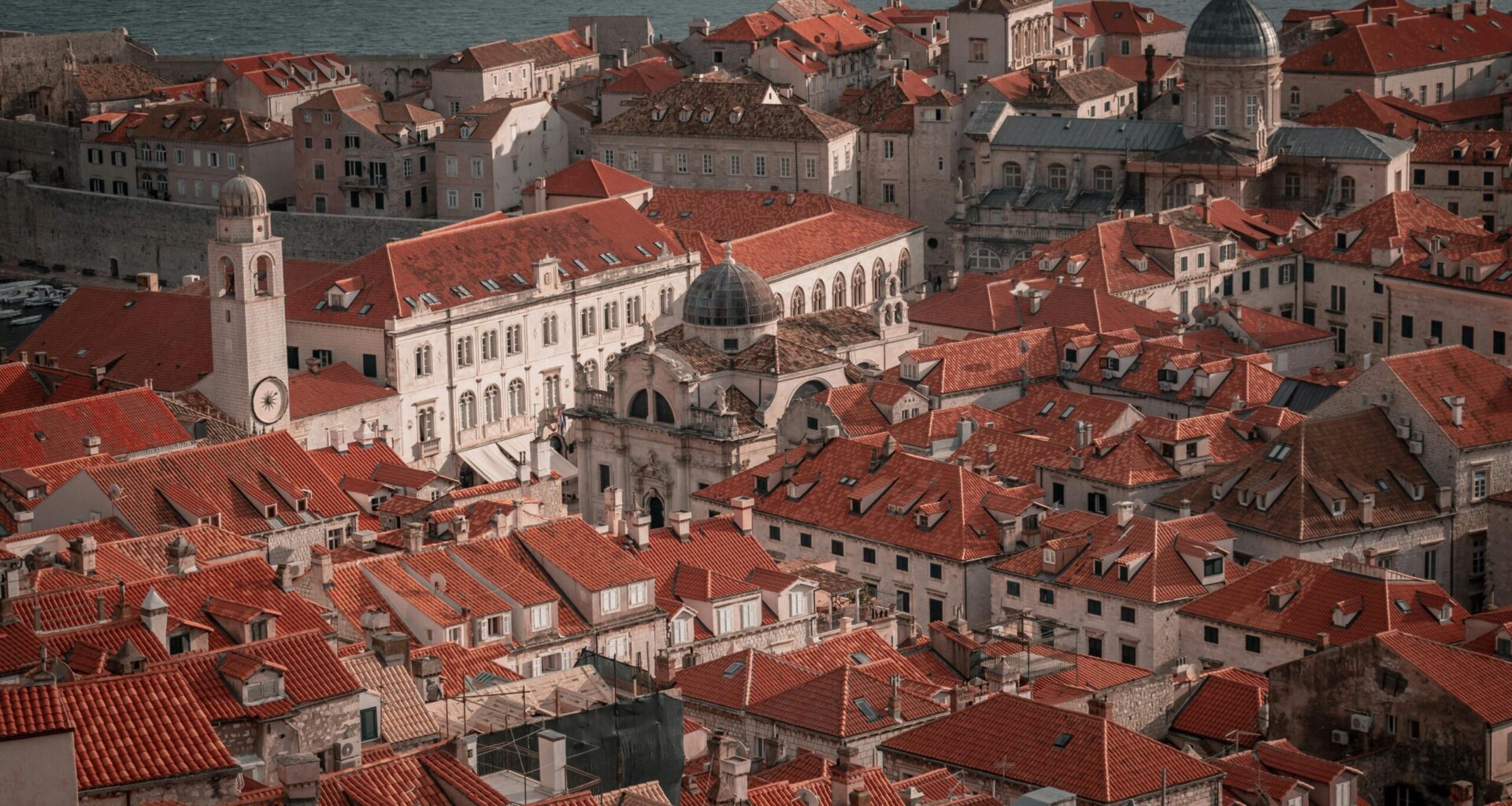September the 23rd, 2025 – There’s a southern Croatian church dedicated to Dubrovnik’s saviour, St. Blaise, who rescued the Pearl of the Adriatic from the jealous clutches of the Venetians.
As Putni kofer/Ivana Vasarevic writes, when people reference the ultimate pearl of the Mediterranean and the most beautiful Croatian city, many will, quite rightly, immediately think of the utterly magnificent Dubrovnik. Its stunning old town, located within the historic walls, Stradun, Onofrio’s Fountains, Orlando’s Column, the Rector’s Palace, the Renaissance Sponza Palace, the Lovrijenac and Revelin fortresses… The list is endless, and one of the most significant is certainly the Baroque Church of St. Blaise, one of Dubrovnik’s most incredible architectural wonders. This beautiful church boasts a central layout and is built in the shape of an inscribed Greek cross with a dome. It is aptly located on an elevated pedestal in the very heart of the old town, at the very junction of the Placa and the square in front of the impressive Rector’s Palace.
dubrovnik almost became the property of venice…

Dubrovnik, the well known flagship of Croatian tourism, has venerated St. Blaise, its patron saint, since the 10th century. Then, according to the records of Dubrovnik’s chroniclers, the aforementioned saint saved the people of Dubrovnik from the jealous Venetians, who had anchored their ships in nearby Gruž and off the island of Lokrum with the intention of conquering the entire city. Thankfully, it is said that St. Blaise warned the parish priest Stojko about their intentions and saved the city from a surprise Venetian night raid. St. Blaise is celebrated on February the 3rd each year, which has also been declared the Day of the City of Dubrovnik.
The magnificent church of St. Blaise was built from 1706 to 1715 in the style of ornate Venetian Baroque. At the request of the Dubrovnik Senate, it was built on the site of an old Romanesque church from the 14th century by Marino Gropelli, who was from Venice itself, and which was truly a great precedent at the time.
In the previous three decades, architects had mostly come from Rome, which was an ally of the city, but this designer hailed from the largest rival city in the entire Mediterranean, Venice. Gropelli also brought to Dubrovnik plenty of skilled stonemasons who were responsible for creating its truly impressive white stone decorations.
the earthquake of 1667 that almost changed everything

Constructed on seismically unstable terrain, the old Romanesque church from the 14th century survived the devastating earthquake of 1667. Although in those difficult times there were even thoughts of abandoning the devastated Dubrovnik and founding an entirely new city on the Lapad peninsula, the three-nave basilica miraculously remained almost intact. For this very reason, it had already taken on the role of a Romanesque cathedral by 1670, and suffered significant damage in the aforementioned large earthquake.
However, the aforementioned church did have its fate sealed by a catastrophic fire in 1706. The fire consumed everything, and only the statue of St. Blaise survived, which to this day represents one of the most significant sculptures in all of Dubrovnik. The model that the saint holds in his hand shows the former architecture of this ancient city and former autonomous republic. In addition to the statue, the city loggia and the houses near the church were also saved in the fire, and it’s believed that they too were saved by the famous martyr St. Blaise, the patron saint of the then Dubrovnik Republic (Ragusa).
much more than just another church

It was then that on the site of the old Romanesque church from the 14th century, the beautiful Church of St. Blaise was built, with a richly decorated facade with a portal, in front of which are wide stairs. The central space of the church is topped by an imposing dome, and the main marble altar is adorned with a statue of St. Blaise made of gilded silver, the work of Dubrovnik’s very own craftsmen from the 15th century. The original bell tower was replaced back during the mid-19th century with a new one on a distaff.
Considering the fact that the church was designed by an architect and sculptor, it’s packed full of details that you could study and admire for hours. From the reliefs under the windows, to the large crossed palm branches, which symbolise the martyrdom of St. Blaise, carved garlands with fruit and sunflowers, to the personifications of Faith and Hope on the edges of the balustrades. Even the heads of the cherubs and angels are depicted carrying palm branches and laurel wreaths. The Church of St. Blaise is a true architectural wonder in Croatia that is absolutely worth visiting when in the Pearl of the Adriatic.
Subscribe to our newsletter
the fields marked with * are required
